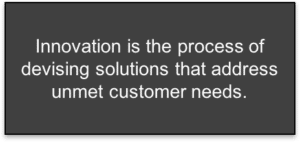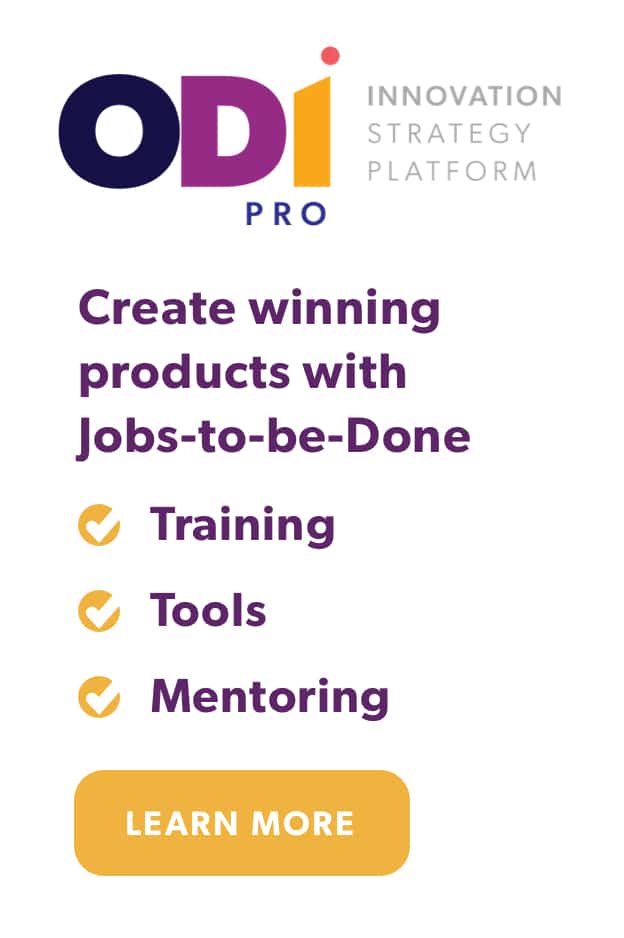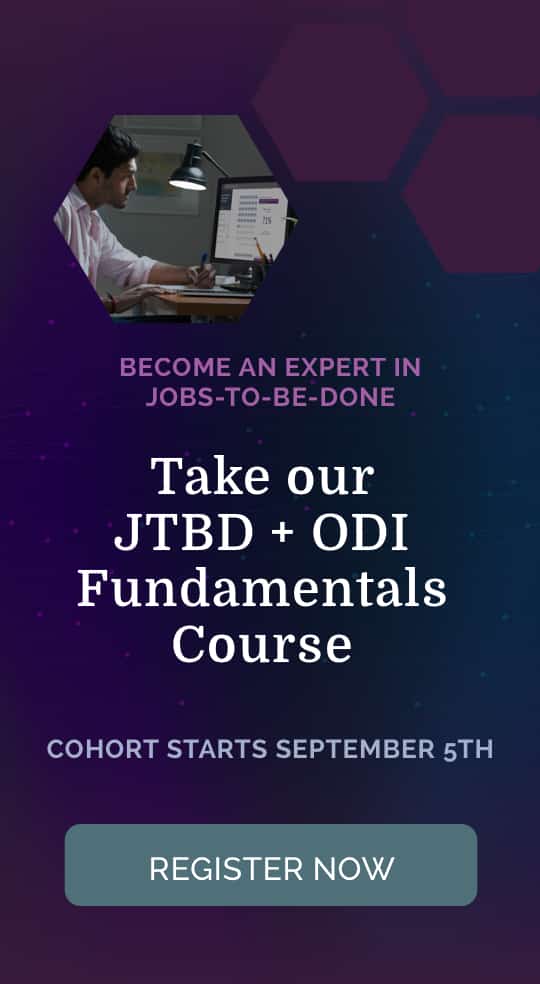Companies often reach out to tell us they are not satisfied with their innovation process. They lack confidence in the offerings they are taking to market and feel they are running out of new ideas for growth. They lament that they have trained people in the latest thinking (e.g., Design Thinking, Human Centered Design…etc.) but that it has not made a measurable impact on their success. They ask, what is wrong with our process? Our question back to them is “how do you know you have an innovation process?”
You see, we cannot assume their underlying hypothesis is valid. We need to first authenticate the premise that they have an innovation process. If we try to help them improve something that has fundamental design flaws, we end up putting small bandages on a mortal wound.
Leading companies are motivated to figure this out. They know sustained growth requires a process to continuously fill their pipeline with winning products and services. To quote Peter Drucker “a business only has two functions – innovation and marketing”. If Drucker is right (and who amongst us can debate Drucker), then we better be pretty darn focused on building an innovation process that works.
 To help our clients, we put together these 6 criteria to help clients critique their innovation process. This list comes from our review of existing literature on general process excellence, augmented with our experience helping hundreds of clients innovate over the past 25 years. A simple review of a company’s innovation process against these 6 criteria can help a company identify areas for improvement.
To help our clients, we put together these 6 criteria to help clients critique their innovation process. This list comes from our review of existing literature on general process excellence, augmented with our experience helping hundreds of clients innovate over the past 25 years. A simple review of a company’s innovation process against these 6 criteria can help a company identify areas for improvement.
1. Definition – A high performing process has a common language and agreed upon definitions for key components of the innovation process. For example, a product team must agree on the following:
- What is a market?
- What is a customer need? What types of needs exist?
- What constitutes an acceptable customer need input?
- How are customer needs measured?
In the absence of agreed upon language of innovation, team members will talk past one another, making consensus difficult and measurement impossible. We have published an article on the definitions of innovation – you can read it here.
2. Prescriptive – A successful business process details exactly what steps must be taken to achieve the desired output. Without this prescription, you don’t have a process. What you have is a set of recommendations or a conceptual model – neither qualify as a process. Does your innovation process provide clear guidance on what steps must be taken? Many companies abdicate this responsibility because they feel it takes away creativity. This is crazy talk. Ambiguity breeds chaos. It’s called the fuzzy front end because of lack of definition and prescription – not because it is impossible to figure out.
3. Efficient – A process must be efficient, void of unnecessary steps and capable of helping the company achieve their desired output with the least input. This efficiency criterion flies in the face of the “fail fast”, iterative, innovation thinking that is popular today. Remember, just because something is popular does not mean it is right. Innovation teams should ask themselves, “what piece of information do we need now to prevent us from having to do this over again in the next iteration?” If that piece of information could be captured when needed, then that iteration would become unnecessary, improving efficiency.
4. Measurable – A process must contain elements that can be measured and quantified. This might sound too obvious but you would be surprised how many innovation processes lack measurability. For example, many innovation processes cannot measure if a customer need is being met or not. Or worse yet, the poor definition around a customer need means they are measuring the wrong thing. As Peter Drucker said, “you can’t manage what you can’t measure.”
5. Repeatable – A process must be repeatable by others and be consistently applied, achieving similar results each time. If not, it is something other than a process (some call it alchemy).
6. Effective – A process must deliver consistent value as its output. Otherwise, it is not worth doing. For innovation, improved market success is the reason for creating and executing the process. If success is not consistently achieved, then all of the key steps of the process have not been identified and controlled.
Companies tell us that they have a Stage-Gate process, or that they used Design Thinking for their innovation process. Stage-Gate is not an innovation process. It is more of a product development governance model. We are not saying this is not important, but it will not provide a consistent output of innovation success. On its own, Stage-Gate fails to meet multiple of these criteria. Likewise, Design Thinking is a not an innovation process – it is perhaps a way to think about customers and design – but it is not an innovation process. The name even states that fact (i.e., thinking). It too fails along many of these criteria (see our prior article on Design Thinking here).
How does your innovation process measure up to these criteria? Do you think there are other criteria? If so, drop me a note at [email protected] and share your thoughts. We are humble enough to know that innovation is the hardest of processes to master and this thinking would benefit from the additional input.




